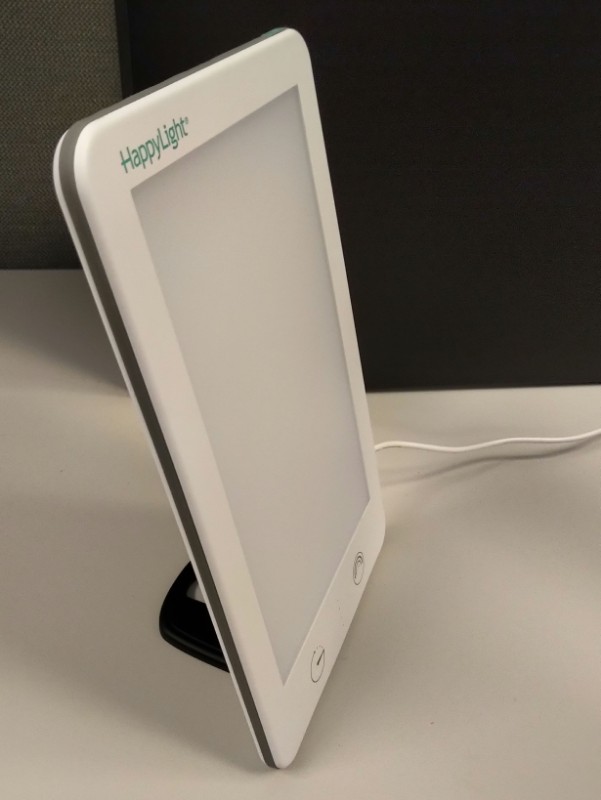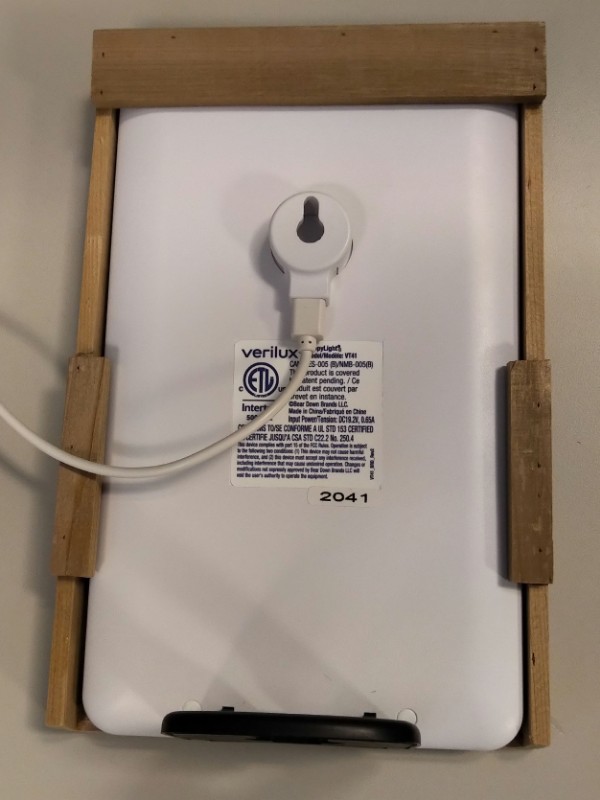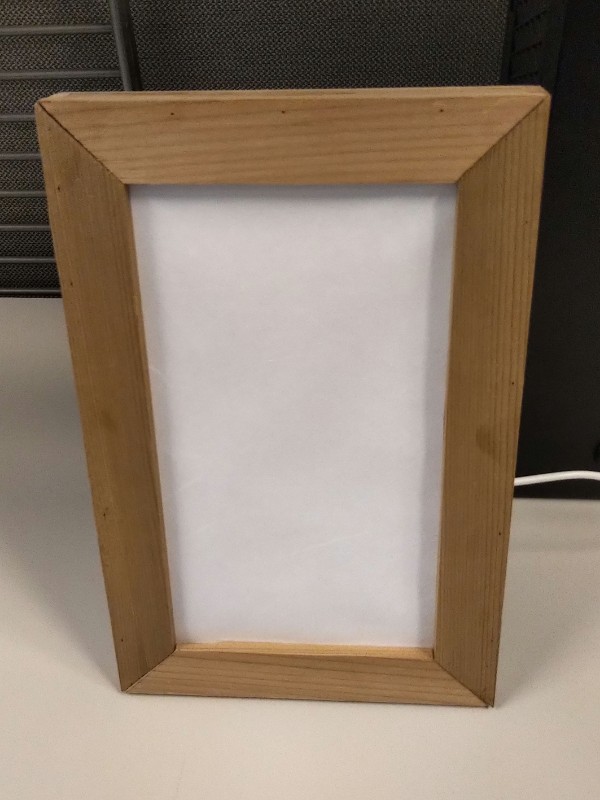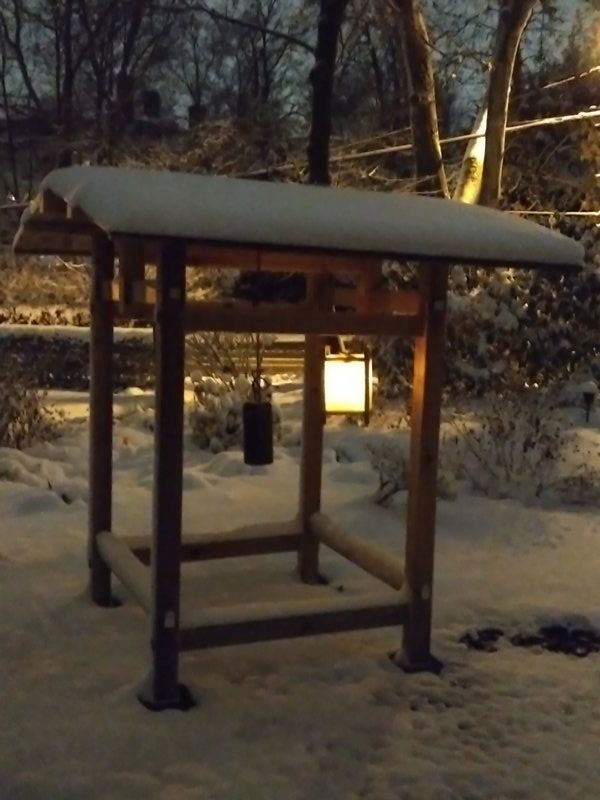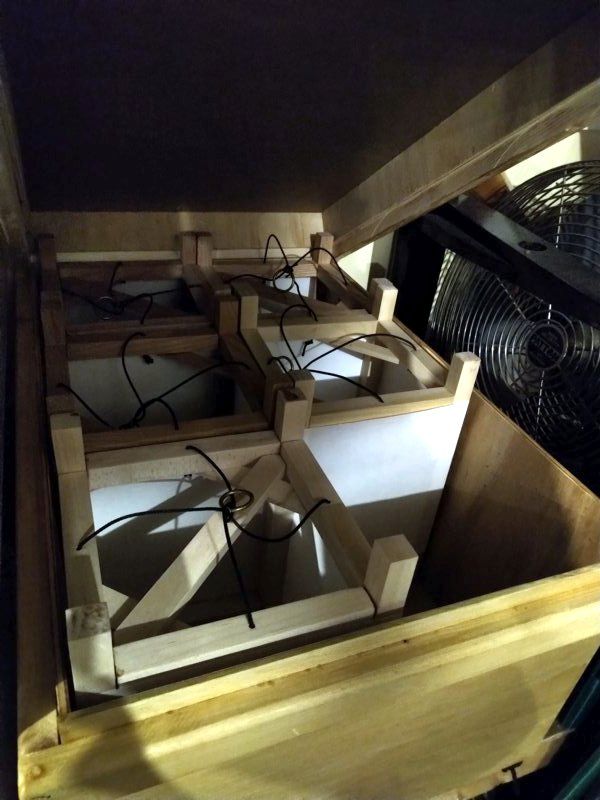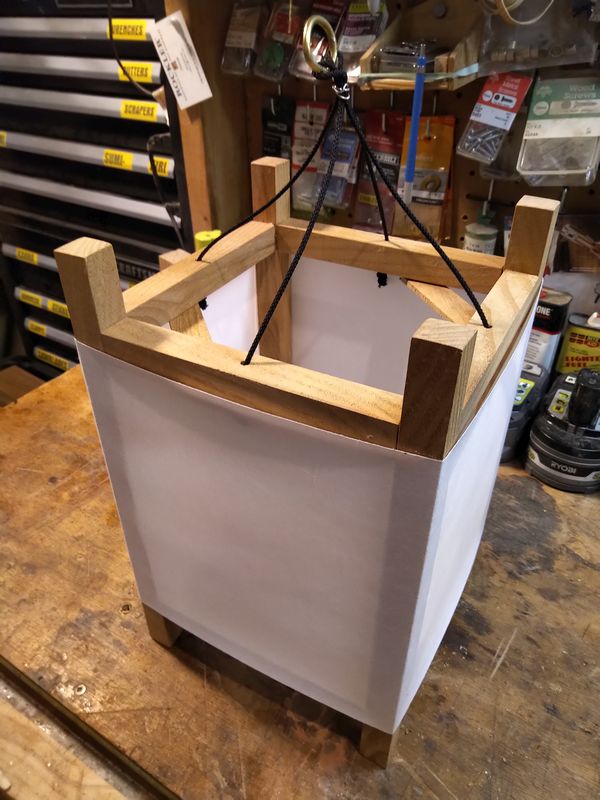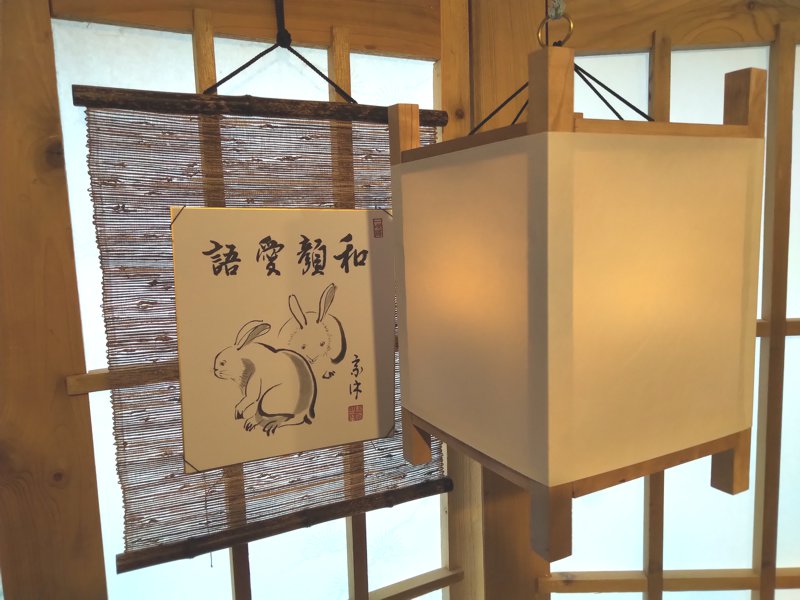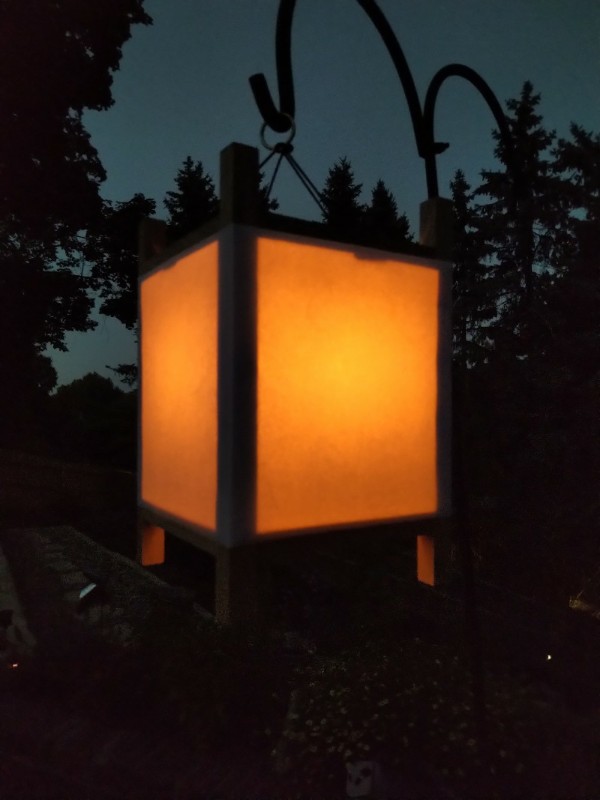Like many people, this winter was pretty bad for me. The isolation at home, the chaotic election, the violent attempt to overthrow a democratically elected government… I realize things were even worse for people who actually got sick, but the rest of us still had a lot to deal with. To help fight the depression, I bought one of those full spectrum lamps to at least help combat the winter blahs that are caused by lack of sunlight during the Winter. I think it helped, even if it was just the feeling that I was trying something new.
I bought a small-ish, flat-panel light that I could mount on the wall over my desk, or place off to the side on a table. It works great, and has a timer function so that I can chunk out my work day. The only problem is that its modern aesthetic clashes with my rustic Japanese decor preferences. So, I made a cedar “shoji” frame to disguise the lamp.
I can’t show you what it looks like with the light on, because the lamp is so bright that you wouldn’t be able to see anything else in the photo besides the glowing rectangle. I am thinking of adding some kumiko lattice-work to the frame opening, but kumiko are so trendy right now that I don’t know if I can bring myself to do that. Honestly, if one more person responds to me saying “I do some Japanese-style woodworking.” with “Have you tried kumiko?” I may stop discussing woodworking entirely.

